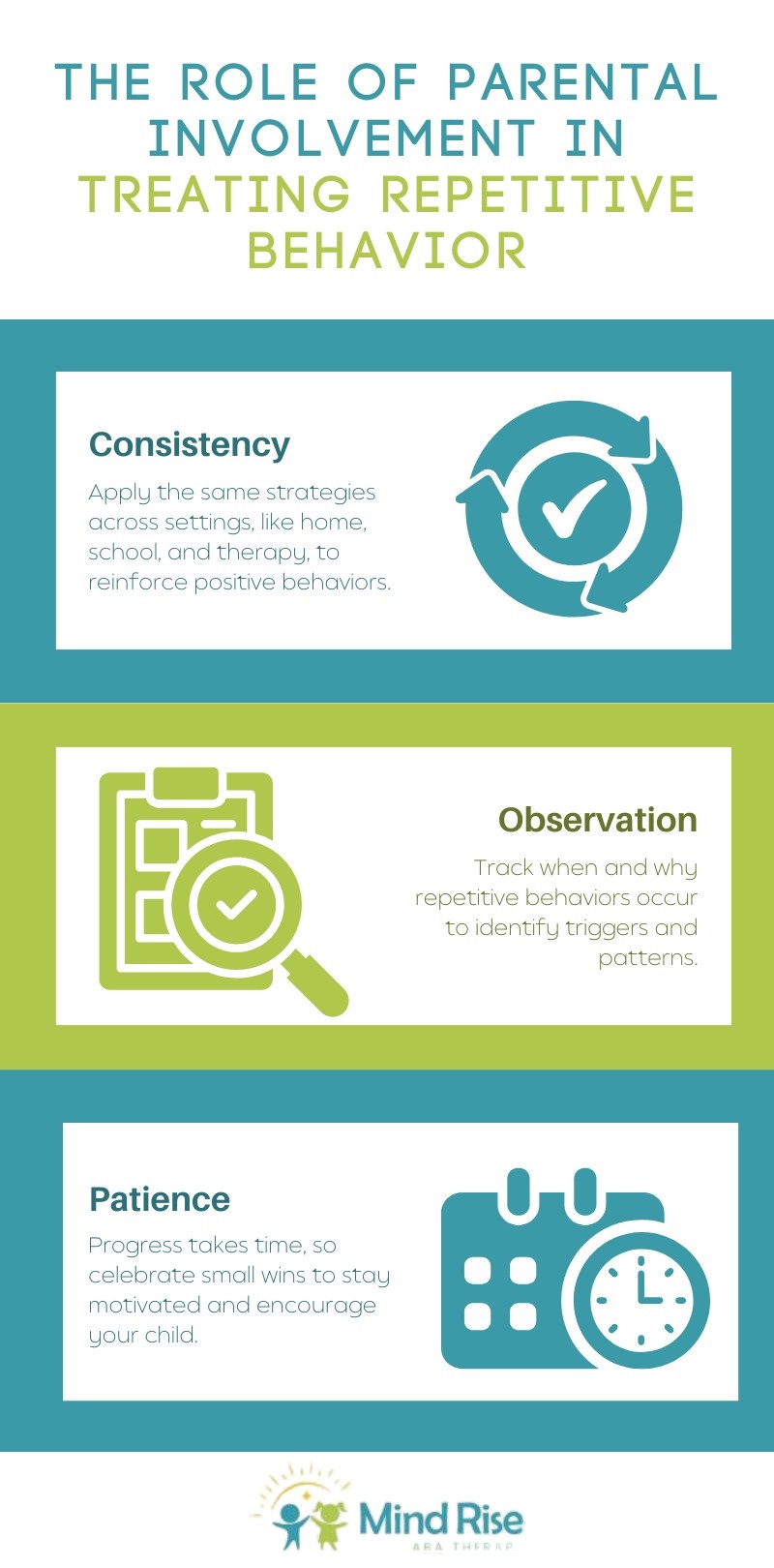Key Points:
- Repetitive behaviors are a core symptom of autism and can vary widely in form and intensity.
- Effective strategies include Applied Behavior Analysis (ABA), sensory integration techniques, and structured routines.
- Early intervention and individualized approaches are critical for managing repetitive behaviors.
- Parental involvement and professional support play a significant role in achieving positive outcomes.
Repetitive behaviors in autism, such as rocking or strict routines, can be both comforting and limiting. With the right strategies, like ABA therapy and sensory integration, you can help your child manage these behaviors and unlock new opportunities for learning and connection.

How to Treat Repetitive Behavior in Autism: A Straightforward Answer
Repetitive behaviors in autism can be effectively managed through evidence-based interventions such as Applied Behavior Analysis (ABA), sensory integration therapy, and structured routines. These approaches focus on understanding the function of the behavior, addressing underlying sensory needs, and teaching alternative skills. Early intervention and consistency are key to achieving long-term success.
Understanding Repetitive Behaviors in Autism
Repetitive behaviors, also known as stereotypic behaviors, are actions that are repeated over and over. These can include motor movements (e.g., spinning, hand-flapping), verbal repetitions (e.g., echolalia), or insistence on sameness (e.g., needing to follow the same routine every day). While these behaviors can provide comfort or help regulate emotions, they may also limit opportunities for social interaction and learning.
Understanding the why behind these behaviors is crucial. For some, repetitive actions may be a way to cope with sensory overload. For others, they may serve as a means of communication or a way to gain control over their environment. Identifying the function of the behavior is the first step in developing an effective treatment plan.
Effective Strategies for Managing Repetitive Behaviors
Repetitive behaviors in autism can feel overwhelming, but there are proven strategies to help. From Applied Behavior Analysis (ABA) to sensory integration techniques, these approaches focus on understanding the why behind the behavior and teaching alternative skills. Let’s explore practical, evidence-based methods to manage these behaviors and support your child’s growth.
1. Applied Behavior Analysis (ABA)
ABA is one of the most widely researched and effective approaches for addressing repetitive behaviors in autism. This therapy focuses on understanding the purpose of the behavior and teaching alternative, more functional skills.
- Functional Behavior Assessment (FBA): This process helps identify the triggers and consequences of repetitive behaviors. For example, a child may flap their hands when they feel anxious.
- Replacement Behaviors: ABA therapists work on teaching alternative behaviors that serve the same function. Instead of hand-flapping, a child might learn to use a stress ball or take deep breaths.
- Positive Reinforcement: Rewarding desired behaviors encourages their repetition, making them more likely to replace repetitive actions.
ABA is highly individualized, ensuring that each child’s unique needs and strengths are addressed.
2. Sensory Integration Techniques
Many repetitive behaviors are linked to sensory processing differences. Sensory integration therapy aims to help individuals better process and respond to sensory input.
- Sensory Diets: These are personalized plans that include activities to meet a child’s sensory needs. For example, a child who seeks movement might benefit from regular breaks on a swing.
- Environmental Modifications: Creating a sensory-friendly environment can reduce the need for repetitive behaviors. This might include using noise-canceling headphones or providing weighted blankets.
- Occupational Therapy: Working with an occupational therapist can help children develop coping strategies for sensory challenges.
3. Structured Routines and Visual Supports
Predictability can be incredibly comforting for individuals with autism. Structured routines and visual supports help reduce anxiety and the need for repetitive behaviors.
- Visual Schedules: These provide a clear outline of daily activities, helping children know what to expect.
- Social Stories: These are short stories that explain social situations and appropriate behaviors, reducing uncertainty.
- Consistent Expectations: Maintaining a consistent routine and clear expectations can minimize stress and the need for repetitive actions.
The Role of Parental Involvement in Treating Repetitive Behavior
Parents also play a vital role in managing repetitive behaviors in autism. By working closely with professionals and implementing strategies at home, you can create a consistent and supportive environment for your child.

When to Seek Professional Help
While many strategies can be implemented at home, professional support is often necessary for more complex or persistent repetitive behaviors. Early intervention is key, as it can lead to better long-term outcomes and improved quality of life.
Here’s when to consider reaching out to professionals:
- Behavioral Therapists: Specializing in ABA, they can create personalized plans to address challenging behaviors.
- Occupational Therapists: They help manage sensory issues and develop fine motor skills.
- Speech Therapists: For verbal repetitive behaviors, they provide tools to improve communication.
Take the First Step with Mind Rise ABA
If you’re seeking effective ways to manage repetitive behaviors in autism, Mind Rise ABA offers expert ABA therapy services in Virginia. Our team of experienced professionals specializes in Applied Behavior Analysis, providing personalized programs tailored to your child’s unique needs.
We understand that every child is different, and our goal is to provide the tools and support necessary for growth and independence. Contact us today to learn more about how ABA therapy can make a difference in your child’s life.

